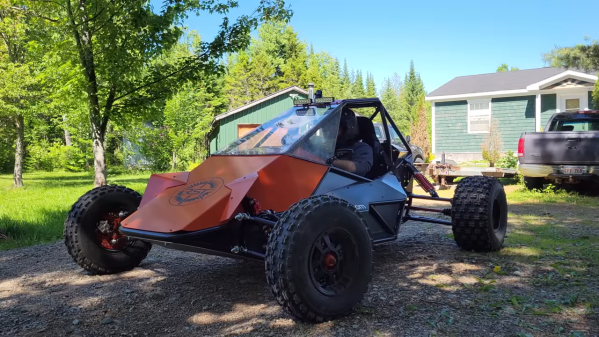It’s a fair bet to say that the future of personal transportation will probably be electric. In support of that, every major car manufacturer either has an electric drivetrain option available now, or they’re working furiously on developing one. And while it’s good that your suburban grocery grabber will someday be powered by the sun, what about the pressing need for EVs that are just plain fun to drive?
To fill the fun gap, at least for now, [James Biggar] built what you can’t buy: an all-electric dune buggy. And lest you think this was a kit build, be assured that the summary video below shows this little sand rail was 100% scratch-built. The chassis is fabricated from bent tubing, and welded up using a clever plywood template to get the angles just right. The buggy has four-wheel independent suspension and a wide, aggressive stance to handle rough terrain. The body panels are sheet aluminum bent on a custom-built brake, which was also used to form the Plexiglas windshield with a little help from a heat gun.
While the bodywork makes the buggy pretty sick looking, the drivetrain is just as impressive. [James] used an ME1616, a liquid-cooled 55-kW beast. A chain drive couples the motor to a differential from a Honda CR-V which has a limited-slip modification installed. The batteries are impressive, too — 32 custom-made lithium-iron-phosphate batteries made from 32650 cells in vacuum-formed ABS plastic shells that nest together compactly. It all adds up to a lot of fun in the dirt; skip to 23:37 in the video to see what this thing can do.
Honestly, the level of craftsmanship here is top-notch, and is all the more impressive in that it’s not fancy — just good, solid methods and lots of hard work. We’d love to have the time and resources to put into something like this — although a drop-in crate motor EV might be a satisfying build too.
Continue reading “Scratch-Built Electric Buggy Tears Up The Dunes”

















